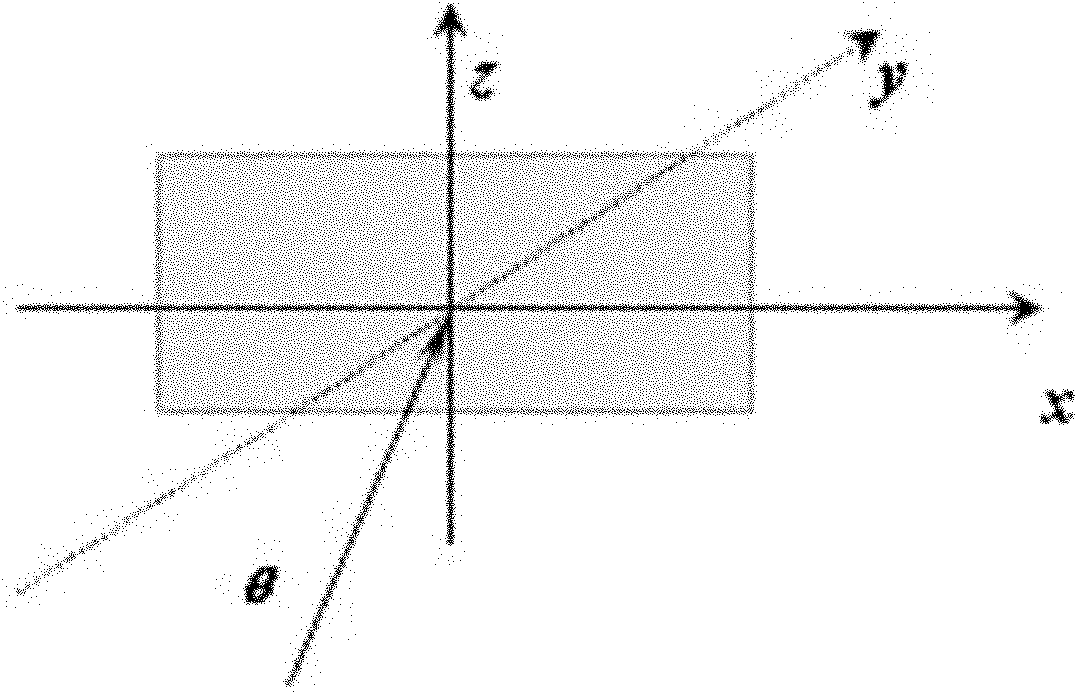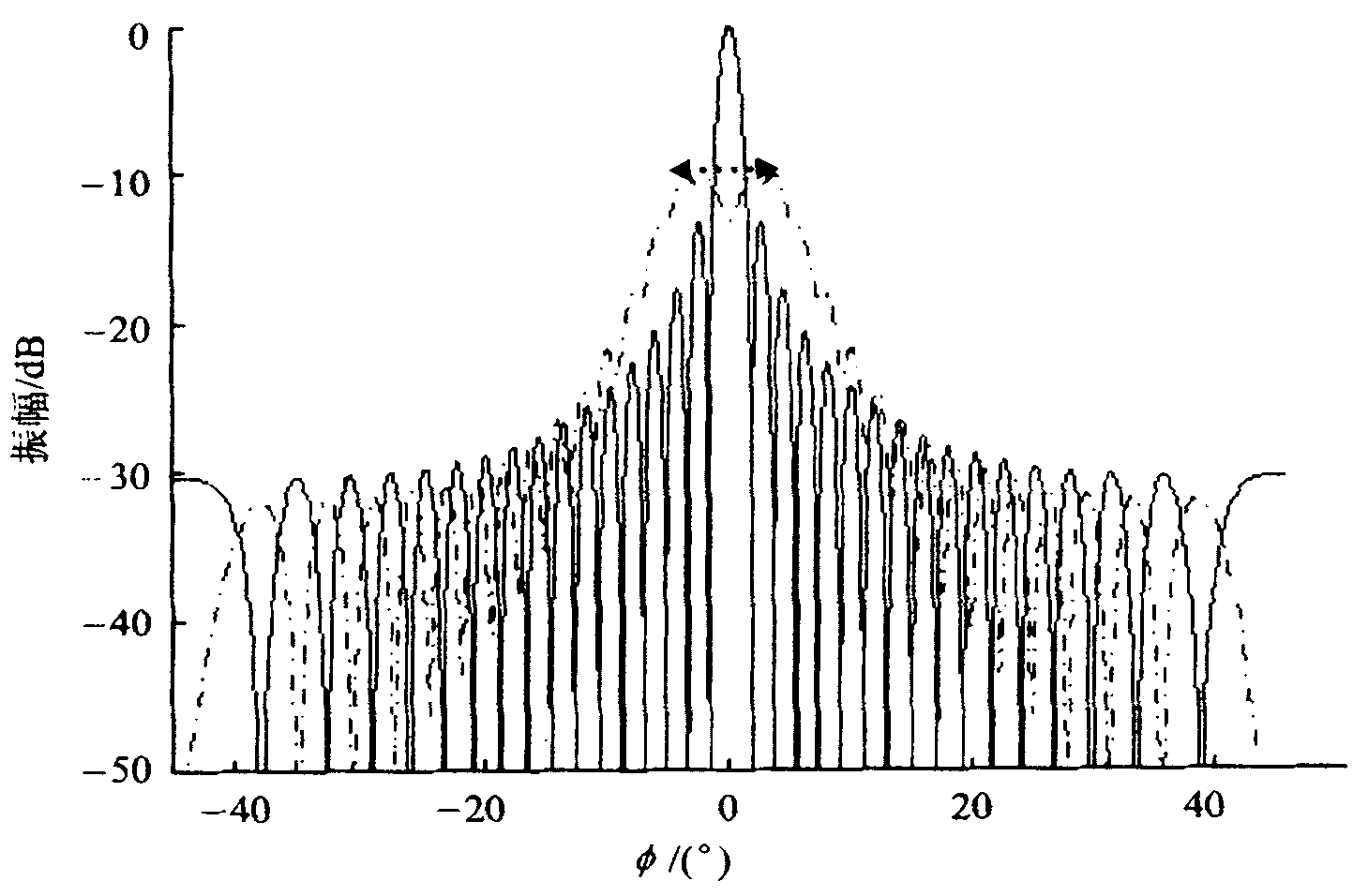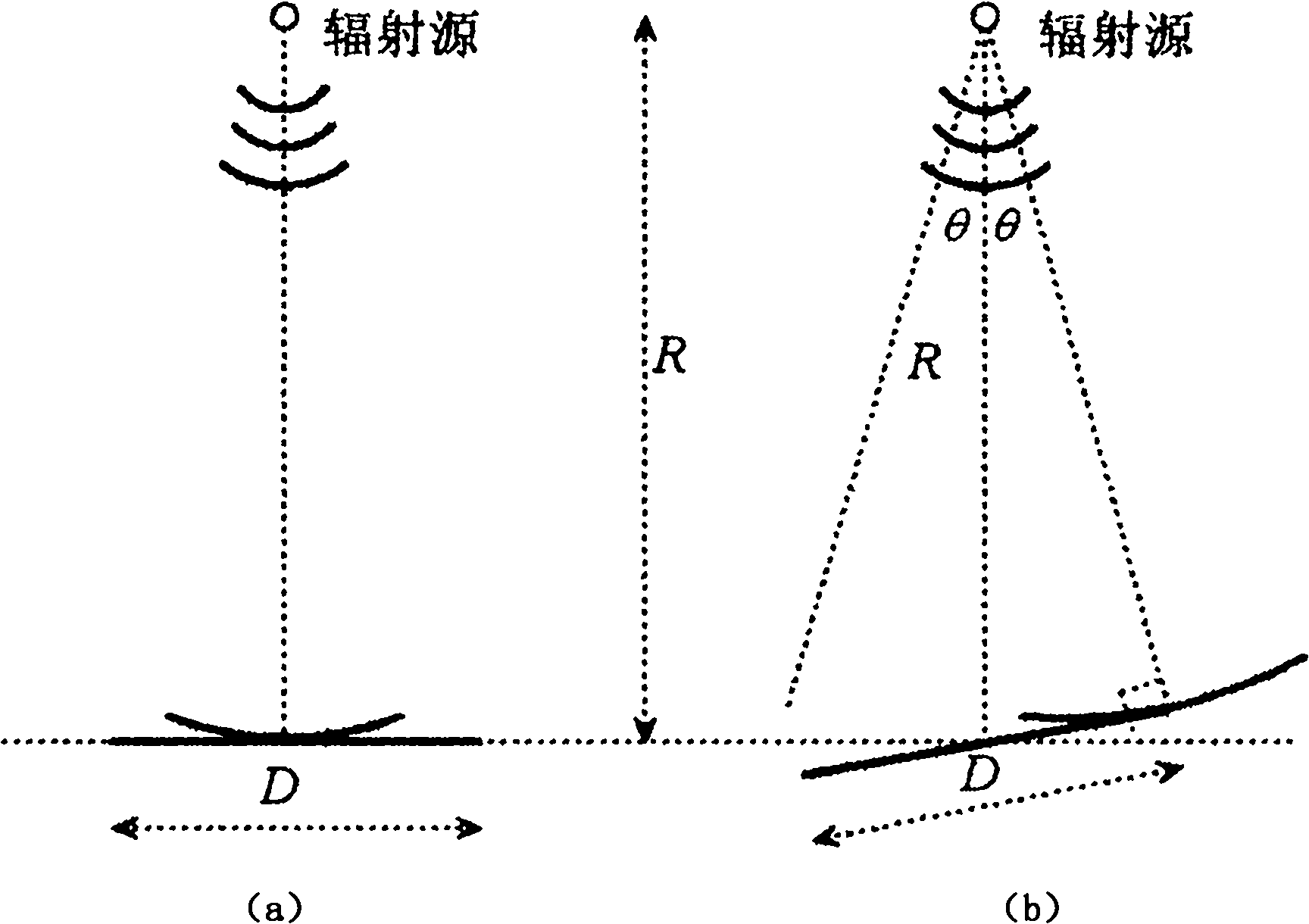Flat top effect estimation method for near-field radar scattering cross section of rectangular flat plate
A technology of radar cross-section and flat plate, which is applied in the field of electromagnetic compatibility research, and can solve the problems that cannot be estimated
- Summary
- Abstract
- Description
- Claims
- Application Information
AI Technical Summary
Problems solved by technology
Method used
Image
Examples
Embodiment Construction
[0017] figure 1 It is a schematic diagram of a rectangular plate. The rectangular plate is located in the x-z plane. The angle between the incident wave of the radiation source and the normal y is θ. There is a significant "flat top" effect in the near-field RCS results of the normal incidence condition of the rectangular plate target ,Such as figure 2 shown.
[0018] Suppose a radiation source emits a spherical wave to a rectangular plate with a length D, and the distance from the radiation source to the midpoint of the rectangular plate is R. When the incident wave direction is perpendicular to the end point of the rectangular plate, it is the critical state of the “flat-top” effect, and the critical state is established geometric model, such as image 3 shown.
[0019] image 3 Represents an ideal spherical wave point source illuminating a rectangular plate along the normal direction in the near-field region. image 3 (a) is the state when the spherical wave is normal...
PUM
 Login to View More
Login to View More Abstract
Description
Claims
Application Information
 Login to View More
Login to View More - R&D
- Intellectual Property
- Life Sciences
- Materials
- Tech Scout
- Unparalleled Data Quality
- Higher Quality Content
- 60% Fewer Hallucinations
Browse by: Latest US Patents, China's latest patents, Technical Efficacy Thesaurus, Application Domain, Technology Topic, Popular Technical Reports.
© 2025 PatSnap. All rights reserved.Legal|Privacy policy|Modern Slavery Act Transparency Statement|Sitemap|About US| Contact US: help@patsnap.com



